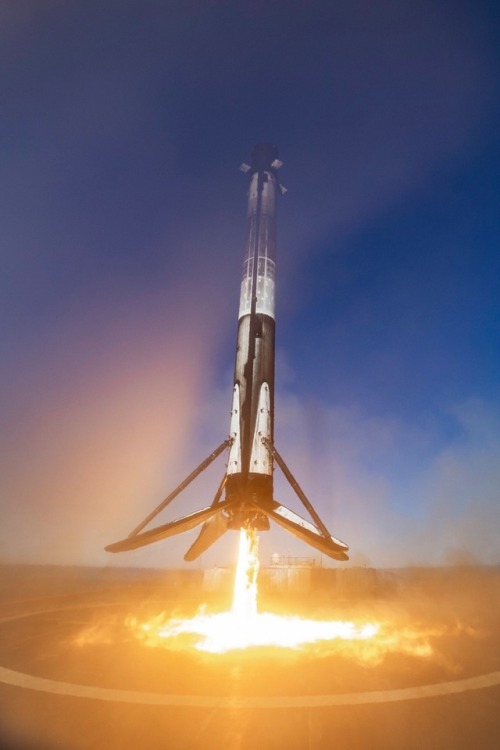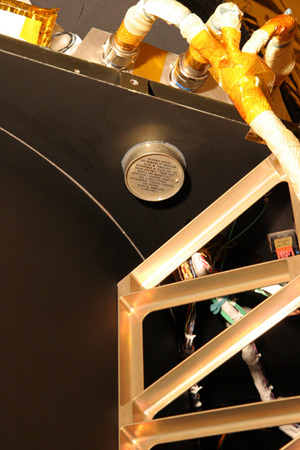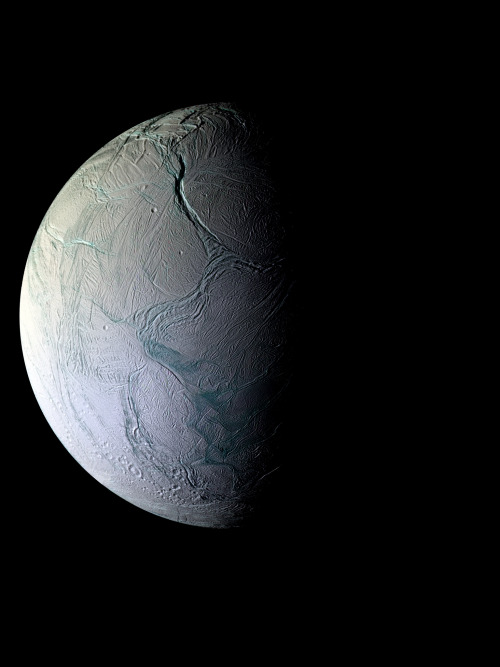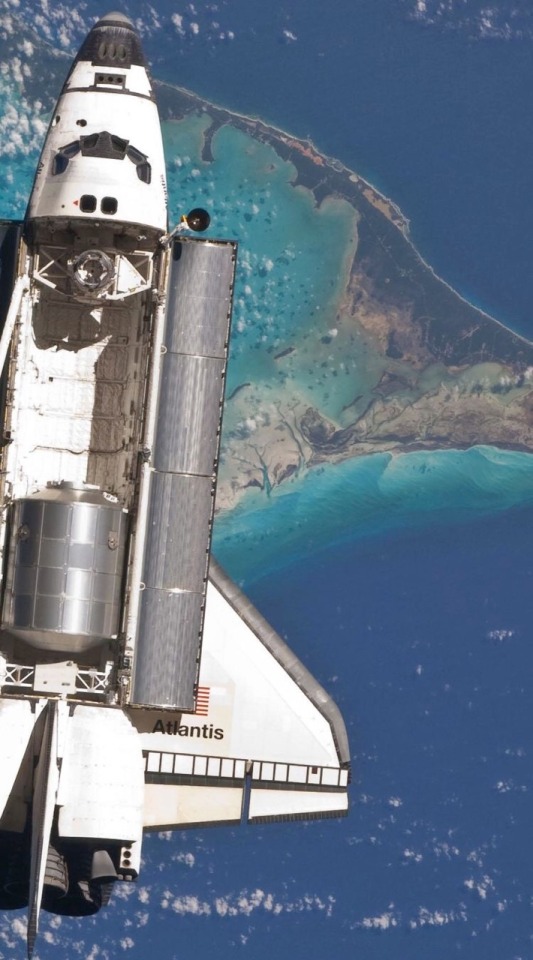NASA’s Search For Life: Astrobiology In The Solar System And Beyond
NASA’s Search for Life: Astrobiology in the Solar System and Beyond
Are we alone in the universe? So far, the only life we know of is right here on Earth. But here at NASA, we’re looking.

We’re exploring the solar system and beyond to help us answer fundamental questions about life beyond our home planet. From studying the habitability of Mars, probing promising “oceans worlds,” such as Titan and Europa, to identifying Earth-size planets around distant stars, our science missions are working together with a goal to find unmistakable signs of life beyond Earth (a field of science called astrobiology).
Dive into the past, present, and future of our search for life in the universe.

Mission Name: The Viking Project
Launch: Viking 1 on August 20, 1975 & Viking 2 on September 9, 1975
Status: Past
Role in the search for life: The Viking Project was our first attempt to search for life on another planet. The mission’s biology experiments revealed unexpected chemical activity in the Martian soil, but provided no clear evidence for the presence of living microorganisms near the landing sites.

Mission Name: Galileo
Launch: October 18, 1989
Status: Past
Role in the search for life: Galileo orbited Jupiter for almost eight years, and made close passes by all its major moons. The spacecraft returned data that continues to shape astrobiology science –– particularly the discovery that Jupiter’s icy moon Europa has evidence of a subsurface ocean with more water than the total amount of liquid water found on Earth.

Mission Name: Kepler and K2
Launch: March 7, 2009
Status: Past
Role in the search for life: Our first planet-hunting mission, the Kepler Space Telescope, paved the way for our search for life in the solar system and beyond. Kepler left a legacy of more than 2,600 exoplanet discoveries, many of which could be promising places for life.

Mission Name: Perseverance Mars Rover
Launch: July 30, 2020
Status: Present
Role in the search for life: Our newest robot astrobiologist is kicking off a new era of exploration on the Red Planet. The rover will search for signs of ancient microbial life, advancing the agency’s quest to explore the past habitability of Mars.

Mission Name: James Webb Space Telescope
Launch: 2021
Status: Future
Role in the search for life: Webb will be the premier space-based observatory of the next decade. Webb observations will be used to study every phase in the history of the universe, including planets and moons in our solar system, and the formation of distant solar systems potentially capable of supporting life on Earth-like exoplanets.

Mission Name: Europa Clipper
Launch: Targeting 2024
Status: Future
Role in the search for life: Europa Clipper will investigate whether Jupiter’s icy moon Europa, with its subsurface ocean, has the capability to support life. Understanding Europa’s habitability will help scientists better understand how life developed on Earth and the potential for finding life beyond our planet.

Mission Name: Dragonfly
Launch: 2027
Status: Future
Role in the search for life: Dragonfly will deliver a rotorcraft to visit Saturn’s largest and richly organic moon, Titan. This revolutionary mission will explore diverse locations to look for prebiotic chemical processes common on both Titan and Earth.
For more on NASA’s search for life, follow NASA Astrobiology on Twitter, on Facebook, or on the web.
Make sure to follow us on Tumblr for your regular dose of space!
More Posts from Sergioballester-blog and Others
Stars Make Firework Supplies!
The next time you see fireworks, take a moment to celebrate the cosmic pyrotechnics that made them possible. From the oxygen and potassium that help fireworks burn to the aluminum that makes sparklers sparkle, most of the elements in the universe wouldn’t be here without stars.
From the time the universe was only a few minutes old until it was about 400 million years old, the cosmos was made of just hydrogen, helium and a teensy bit of lithium. It took some stellar activity to produce the rest of the elements!

Stars are element factories
Even after more than 13 billion years, the hydrogen and helium that formed soon after the big bang still make up over 90 percent of the atoms in the cosmos. Most of the other elements come from stars.

Stars began popping into the universe about 400 million years after the big bang. That sounds like a long time, but it’s only about 3% of the universe’s current age!
Our Nancy Grace Roman Space Telescope will study the universe’s early days to help us learn more about how we went from a hot, soupy sea of atoms to the bigger cosmic structures we see today. We know hydrogen and helium atoms gravitated together to form stars, where atoms could fuse together to make new elements, but we're not sure when it began happening. Roman will help us find out.

The central parts of atoms, called nuclei, are super antisocial – it takes a lot of heat and pressure to force them close together. Strong gravity in the fiery cores of the first stars provided just the right conditions for hydrogen and helium atoms to combine to form more elements and generate energy. The same process continues today in stars like our Sun and provides some special firework supplies.
Carbon makes fireworks explode, helps launch them into the sky, and is even an ingredient in the “black snakes” that seem to grow out of tiny pellets. Fireworks glow pink with help from the element lithium. Both of these elements are created by average, Sun-like stars as they cycle from normal stars to red giants to white dwarfs.
Eventually stars release their elements into the cosmos, where they can be recycled into later generations of stars and planets. Sometimes they encounter cosmic rays, which are nuclei that have been boosted to high speed by the most energetic events in the universe. When cosmic rays collide with atoms, the impact can break them apart, forming simpler elements. That’s how we get boron, which can make fireworks green, and beryllium, which can make them silver or white!

Since massive stars have even stronger gravity in their cores, they can fuse more elements – all the way up to iron. (The process stops there because instead of producing energy, fusing iron is so hard to do that it uses up energy.)
That means the sodium that makes fireworks yellow, the aluminum that produces silver sparks (like in sparklers), and even the oxygen that helps fireworks ignite were all first made in stars, too! A lot of these more complex elements that we take for granted are actually pretty rare throughout the cosmos, adding up to less than 10 percent of the atoms in the universe combined!
Fusion in stars only got us through iron on the periodic table, so where do the rest of our elements come from? It’s what happens next in massive stars that produces some of the even more exotic elements.

Dying stars make elements too!
Once a star many times the Sun’s mass burns through its fuel, gravity is no longer held in check, and its core collapses under its own weight. There, atoms are crushed extremely close together – and they don’t like that! Eventually it reaches a breaking point and the star explodes as a brilliant supernova. Talk about fireworks! These exploding stars make elements like copper, which makes fireworks blue, and zinc, which creates a smoky effect.
Something similar can happen when a white dwarf star – the small, dense core left behind after a Sun-like star runs out of fuel – steals material from a neighboring star. These white dwarfs can explode as supernovae too, spewing elements like the calcium that makes fireworks orange into the cosmos.

When stars collide
White dwarfs aren’t the only “dead” stars that can shower their surroundings with new elements. Stars that are too massive to leave behind white dwarfs but not massive enough to create black holes end up as neutron stars.
If two of these extremely dense stellar skeletons collide, they can produce all kinds of elements, including the barium that makes fireworks bright green and the antimony that creates a glitter effect. Reading this on a phone or computer? You can thank crashing dead stars for some of the metals that make up your device, too!

As for most of the remaining elements we know of, we've only seen them in labs on Earth so far.
Sounds like we’ve got it all figured out, right? But there are still lots of open questions. Our Roman Space Telescope will help us learn more about how elements were created and distributed throughout galaxies. That’s important because the right materials had to come together to form the air we breathe, our bodies, the planet we live on, and yes – even fireworks!
So when you’re watching fireworks, think about their cosmic origins!
Learn more about the Roman Space Telescope at: https://roman.gsfc.nasa.gov/
Make sure to follow us on Tumblr for your regular dose of space: http://nasa.tumblr.com
Celebrating Five Years at Jupiter!
We just released new eye-catching posters and backgrounds to celebrate the five-year anniversary of Juno’s orbit insertion at Jupiter in psychedelic style.

On July 4, 2016, our Juno spacecraft arrived at Jupiter on a mission to peer through the gas giant planet’s dense clouds and answer questions about the origins of our solar system. Since its arrival, Juno has provided scientists a treasure trove of data about the planet’s origins, interior structures, atmosphere, and magnetosphere.

Juno is the first mission to observe Jupiter’s deep atmosphere and interior, and will continue to delight with dazzling views of the planet’s colorful clouds and Galilean moons. As it circles Jupiter, Juno provides critical knowledge for understanding the formation of our own solar system, the Jovian system, and the role giant planets play in putting together planetary systems elsewhere.
Get the posters and backgrounds here!
For more on our Juno mission at Jupiter, follow NASA Solar System on Twitter and Facebook.
Make sure to follow us on Tumblr for your regular dose of space!



After completing its SSO-A mission of launching a record breaking 64 satellites at once, the B5 Falcon 9 booster landed for the third time breaking another record!

Shuttle Endeavour’s flight deck. 🚀
September 15
This one is technically not yet history, because at the time of posting, the little craft has about half an hour left to go. That said, let’s proceed.
In 2017, NASA’s Cassini space probe ended its twenty-year mission at Saturn. After a nearly-seven-year-long journey there, it orbited the ringed planet for 13 years and just over two months, gathering copious amounts of information about the planet, said rings, and many of its moons. It landed an ESA probe called Huygens on Titan, the first-ever soft landing in the outer Solar System. It discovered lakes, seas, and rivers of methane on Titan, geysers of water erupting from Enceladus (and passed within 50 miles of that moon’s surface), and found gigantic, raging hurricanes at both of Saturn’s poles.
And the images it returned are beautiful enough to make you weep.
On this day in 2017, with the fuel for Cassini’s directional thrusters running low, the probe was de-orbited into the Saturnian atmosphere to prevent any possibility of any contamination of possible biotic environments on Titan or Enceladus. The remaining thruster fuel was used to keep the radio dish pointed towards Earth so the probe could transmit information about the upper atmosphere of Saturn while it was burning up due to atmospheric friction.
This is us at our best. We spent no small amount of money on a nuclear-powered robot, launched it into space, sent it a billion miles away, and worked with it for two decades just to learn about another planet. And when the repeatedly-extended missions were through, we made the little craft sacrifice itself like a samurai, performing its duty as long as it could while it became a shooting star in the Saturnian sky.

Rhea occulting Saturn

Water geysers on Enceladus

Strange Iapetus

Look at this gorgeousness

A gigantic motherfucking storm in Saturn’s northern hemisphere

Tethys

This image is from the surface of a moon of a planet at least 746 million miles away. Sweet lord

Mimas

Vertical structures in the rings. Holy shit

Titan and Dione occulting Saturn, rings visible

Little Daphnis making gravitational ripples in the rings

That’s here. That’s home. That’s all of us that ever lived.

Saturn, backlit

A polar vortex on the gas giant

Icy Enceladus
(All images from NASA/JPL)
Going the Distance... In Space
On April 17, NASA's New Horizons crossed a rare deep-space milestone – 50 astronomical units from the Sun, or 50 times farther from the Sun than Earth is. New Horizons is just the fifth spacecraft to reach this great distance, following the legendary Voyagers 1 and 2 and Pioneers 10 and 11. It’s almost 5 billion miles (7.5 billion kilometers) away; a remote region where a signal radioed from NASA's largest antennas on Earth, even traveling at the speed of light, needs seven hours to reach the far-flung spacecraft.
To celebrate reaching 50 AU, the New Horizons team compiled a list of 50 facts about the mission. Here are just a few of them; you'll find the full collection at: http://pluto.jhuapl.edu/News-Center/Fifty-Facts.php.

New Horizons is the first – and so far, only – spacecraft to visit Pluto. New Horizons sped through the Pluto system on July 14, 2015, providing a history-making close-up view of the dwarf planet and its family of five moons.
New Horizons is carrying some of the ashes of Pluto’s discoverer, Clyde Tombaugh. In 1930, the amateur astronomer spotted Pluto in a series of telescope images at Lowell Observatory in Arizona, making him the first American to discover a planet.

The “Pluto Not Yet Explored” U.S. stamp that New Horizons carries holds the Guinness World Record for the farthest traveled postage stamp. The stamp was part of a series created in 1991, when Pluto was the last unexplored planet in the solar system.

Dispatched at 36,400 miles per hour (58, 500 kilometers per hour) on January 19, 2006, New Horizons is still the fastest human-made object ever launched from Earth.
As the spacecraft flew by Jupiter’s moon Io, in February 2007, New Horizons captured the first detailed movie of a volcano erupting anywhere in the solar system except Earth.

New Horizons’ radioisotope thermoelectric generator (RTG) – its nuclear battery – will provide enough power to keep the spacecraft operating until the late-2030s.

Measurements of the universe’s darkness using New Horizons data found that the universe is twice as bright as predicted – a major extragalactic astronomy discovery!

New Horizons’ Venetia Burney Student Dust Counter is the first student-built instrument on any NASA planetary mission – and is providing unprecedented insight into the dust environment in the outer solar system.

New Horizons is so far away, that even the positons of the stars look different than what we see from Earth. This view of an "alien sky" allowed scientists to make stereo images of the nearest stars against the background of the galaxy.

Arrokoth – the official name the mission team proposed for the Kuiper Belt object New Horizons explored in January 2019 – is a Native American term that means “sky” in the Powhatan/Algonquin language.

Stay tuned in to the latest New Horizons updates on the mission website and follow NASA Solar System on Twitter and Facebook.
Make sure to follow us on Tumblr for your regular dose of space: http://nasa.tumblr.com.

Image of the moon of Saturn, Enceladus, taken by the Cassini spacecraft
Image credit: NASA / JPL


July 20, 1969
Project Apollo on Flickr

Shuttle Atlantis over the Bahamas. 🚀
-
 cosmicretreat reblogged this · 1 month ago
cosmicretreat reblogged this · 1 month ago -
 chai-cream liked this · 2 years ago
chai-cream liked this · 2 years ago -
 rayiguess liked this · 2 years ago
rayiguess liked this · 2 years ago -
 droidfriend liked this · 2 years ago
droidfriend liked this · 2 years ago -
 gameover77world liked this · 2 years ago
gameover77world liked this · 2 years ago -
 dragonmythfandom liked this · 2 years ago
dragonmythfandom liked this · 2 years ago -
 lateralroot liked this · 2 years ago
lateralroot liked this · 2 years ago -
 troyminos reblogged this · 2 years ago
troyminos reblogged this · 2 years ago -
 troyminos liked this · 2 years ago
troyminos liked this · 2 years ago -
 brainsx reblogged this · 2 years ago
brainsx reblogged this · 2 years ago -
 deathofdelta liked this · 2 years ago
deathofdelta liked this · 2 years ago -
 voicewave reblogged this · 2 years ago
voicewave reblogged this · 2 years ago -
 i-screamforicecream liked this · 2 years ago
i-screamforicecream liked this · 2 years ago -
 geekybadassorchids liked this · 2 years ago
geekybadassorchids liked this · 2 years ago -
 symphonyoflunacy liked this · 2 years ago
symphonyoflunacy liked this · 2 years ago -
 wobblynerve reblogged this · 3 years ago
wobblynerve reblogged this · 3 years ago -
 syan42-sex-90zohi liked this · 3 years ago
syan42-sex-90zohi liked this · 3 years ago -
 overly-hubristic-mad-scientist liked this · 3 years ago
overly-hubristic-mad-scientist liked this · 3 years ago -
 brbscreaminginthewoods liked this · 3 years ago
brbscreaminginthewoods liked this · 3 years ago -
 littlemissmockingbird-blog liked this · 3 years ago
littlemissmockingbird-blog liked this · 3 years ago -
 juggyuwu liked this · 3 years ago
juggyuwu liked this · 3 years ago -
 bernadette-baguette liked this · 3 years ago
bernadette-baguette liked this · 3 years ago -
 appla1 reblogged this · 3 years ago
appla1 reblogged this · 3 years ago -
 vibing-away reblogged this · 3 years ago
vibing-away reblogged this · 3 years ago -
 0moikane liked this · 3 years ago
0moikane liked this · 3 years ago